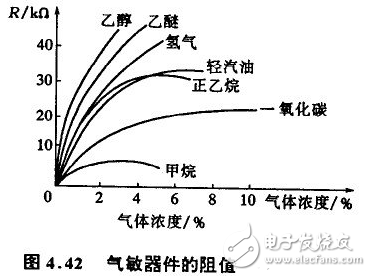A gas sensor is a sensor that converts gas components and concentrations into electrical signals. In the production and life of modern society, various gases are exposed and need to be tested and controlled. Such as the detection and control of gas components in chemical production, the detection and alarm of coal mine gas concentration, the monitoring of environmental pollution, gas leakage, fire alarm, detection and control of combustion conditions.
Classification of gas sensorsThere are many types of gas sensors, including gas sensors for sensitive gas types, vacuum gas sensors for sensitive gas volumes, and gas component sensors for detecting gas components. The former mainly includes a semiconductor gas sensor and a solid electrolyte gas sensor, and the latter mainly has a high frequency component sensor and an optical component sensor. Semiconductor gas sensors have a wide range of applications due to their high sensitivity, fast response, long life and low cost. This section will focus on semiconductor gas sensors.
How does a semiconductor gas sensor work?A semiconductor gas sensor uses a semiconductor gas sensor to contact a gas to cause a change in semiconductor properties to detect a component of a specific gas or to measure its concentration.
Semiconductor gas sensors are generally classified into two types, resistive and non-resistive. Resistive semiconductor gas sensors use gas-sensitive semiconductor materials such as tin oxide (SnQ2), manganese oxide (MnO2) and other metal oxides to make sensitive components when they absorb fumes such as hydrogen, carbon monoxide and alkanes. In the case of ether, drunk, benzene, natural gas, etc., a reduction reaction occurs, and heat is released to increase the temperature of the element and the resistance changes. Using this characteristic of the semiconductor material, the composition and concentration of the gas are converted into electrical signals for monitoring and alarming.
Figure 4.42 shows the resistance-concentration relationship of a typical gas sensor. It can be seen that the components are sensitive to different gases, such as diethyl ether, ethyl alcohol, hydrogen, etc., and have low sensitivity to methane. Generally, as the concentration of the gas increases, the resistance of the element increases significantly, and within a certain range, it is linear.

Semiconductor gas sensors have been widely used due to their high sensitivity, fast response time and fast recovery time, long service life and low cost. According to the use, it can be divided into several types, such as detectors, alarms, automatic control instruments and test instruments.
Charge Controller Solar,Solar Street Lamp Charging Controller,Pwm Solar Charge Controller,Solar Charging Controller Lifepo4
GuangZhou HanFong New Energy Technology Co. , Ltd. , https://www.gzinverter.com